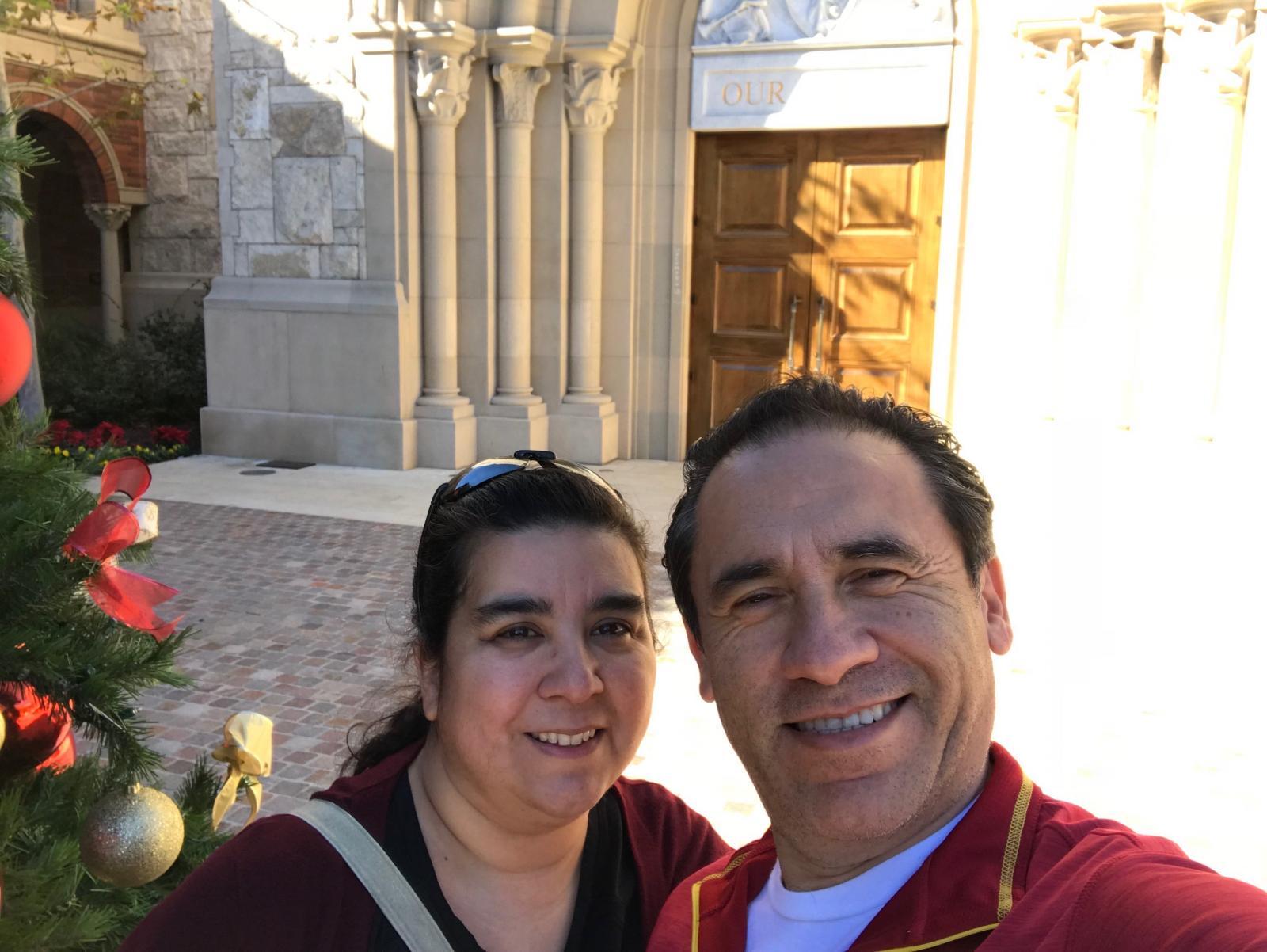As president, chief executive officer and chairman of the Veteran’s Chamber of Commerce, Jack Ochoa, 50, of Glendora, California, has lived a successful and rewarding life. Though it’s a busy life, he is a family man and takes pride in being a loving husband, father of two daughters and grandfather. After being rushed to the Emergency Department at MemorialCare Long Beach Medical Center, Jack made the decision to change his busy lifestyle and put his health first.
In December 2019, Jack and his colleague, Jorge, were at a local Long Beach donut shop taking a short break from work. Suddenly, Jorge noticed something was terribly wrong with Jack. Jack had sudden arm weakness and began slurring his speech. Luckily, Jorge recognized these as signs of stroke and immediately called 911.
Within minutes, Jack arrived at Long Beach Medical Center, which has a Joint Commission Certified
Comprehensive Stroke Center able to care for the most complex stroke cases.
With a stroke, time is of the essence, so when a patient is brought to Long Beach Medical Center, a multi-disciplinary team awaits their arrival in a dedicated stroke treatment room inside the Emergency Department ready to spring into action.
“I don’t remember much after Jorge began to notice my symptoms, I completely blacked out after that,” says Jack. “I remember waking up surrounded by a team of doctors and nurses not knowing where I was. I just knew that wherever I was, this team was franticly trying to save my life.”
After a quick assessment, he was rushed just down the hall to the 320-slice computed tomography (CT) scanner to determine which areas of his brain were affected. It was determined that he had a large blood clot in his carotid arteries. In an effort to immediately break up the clot, he was administered the clot busting drug, tissue plasminogen activator (tPA).
However, Jack’s clot was too large and could not be effectively broken up with tPA alone. That’s when the expert team from the Division of Interventional Neuroradiology (DINR), part of the Comprehensive Stroke Center, stepped in. The University of California, Los Angeles (UCLA) trained DINR physicians decided that the blood clot would have to be removed through a specialized procedure.
Interventional neuroradiologist May Nour, M.D., Ph.D., removed the clot by performing a minimally invasive clot retrieval – which uses a catheter to navigate though the blood vessels of the body as a route to reach the clot in the brain and remove it, freeing blood flow to the affected tissue.
“Jack’s clot was located in his internal carotid artery – a large blood vessel extending from the neck to the brain – which left him completely paralyzed on his left side, gave him heavily slurred speech, affected part of his vision and made him neglectful of large area of space,” says Dr. Nour. “Once the clot was removed, he immediately regained his speech and strength thanks to how quickly blood flow was restored to his brain.”
Following the procedure, Jack was admitted into the Neuro Intensive Care Unit (ICU), where nurses continuously monitored his condition and assessed his mobility following the stroke.
“My wife filmed me in the ICU and showed me the video afterwards, I couldn’t believe how bad I looked,” says Jack. “My left side was basically paralyzed, and I couldn’t stand up. Most stroke patients don’t regain their mobility for weeks following their stroke, but I miraculously regained my mobility in just two days. Everyone was shocked by how quickly I recovered.”
Because of Jack’s remarkable recovery, he was quickly able to leave the ICU and spend the next three days in the neurology unit, before being discharged from Long Beach Medical Center.
“Had Jack’s treatment been delayed, his outcome would have been completely different,” says. Dr. Nour. “His colleague’s knowledge of stroke symptoms, the immediate action of the first responders and our team’s collaboration and expertise saved his life.”
Most patients recovering from a stroke require long-term stroke rehabilitation, lasting months or years. Jack’s quick recovery allowed him to leave Long Beach Medical Center without any rehabilitation. Now, he focuses on keeping his stress levels low, exercising, eating well and most importantly, spending time with his family.
“Prior to my stroke, I would overwork myself and wouldn’t put my health first,” he says. “Now, I made the decision to change my life by not taking anything for granted or letting stress affect me. I survived that day because of the amazing team at Long Beach Medical Center.”
To ensure that the affected artery does not close again or form another clot, a stent was recently placed in the artery to help keep it open. He continues to receive follow-up care at Long Beach Medical Center to prevent a future stroke from ever happening again.